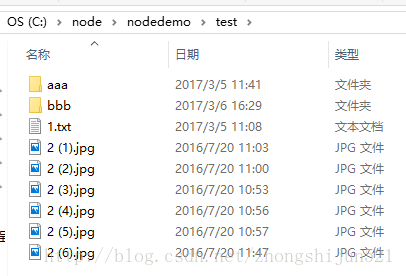本文由LinuxProbe.Com团队成员烨子整理发布,原文来自:毛竹-博客。
使用name选项
文件名选项是find命令最常用的选项,要么单独使用该选项,要么和其他选项一起使用。可以使用某种文件名模式来匹配文件,记住要用冒号将文件名模式导致来。不管当前路径是哪些,假如想要在自己的根目录$HOME中查找文件名符合*.log的文件,使用~作为’pathname’参数,波浪号~代表了你的$HOME目录。
示例1:想要在当前目录及子目录中查找所有的‘*.log‘文件
find . -name "*.log" -print
示例2:想要的当前目录及子目录中查找文件名以一个小写字母开头的文件
find . -name "[A-Z]*" -print
示例3:想要在/etc目录中查找文件名以host开头的文件
find /etc -name "host*" -print
示例4:想要查找$HOME目录中的文件
find ~ -name "*" -print 或find . -print
示例5:要想让系统高负荷运行,就从根目录开始查找所有的文件
find / -name "*" -print
示例6:想在当前目录查找文件名以一个个大写字母开头,最后是4到9加上.log结束的文件
命令:
find . -name "[a-z]*[4-9].log" -print
输出:
[root@localhost test]# ll 总计 316 -rw-r--r-- 1 root root 302108 11-13 06:03 log2012.log -rw-r--r-- 1 root root 61 11-13 06:03 log2013.log -rw-r--r-- 1 root root 0 11-13 06:03 log2014.log -rw-r--r-- 1 root root 0 11-13 06:06 log2015.log drwxr-xr-x 6 root root 4096 10-27 01:58 scf drwxrwxr-x 2 root root 4096 11-13 06:08 test3 drwxrwxr-x 2 root root 4096 11-13 05:50 test4 [root@localhost test]# find . -name "[a-z]*[4-9].log" -print ./log2014.log ./log2015.log ./test4/log2014.log
用perm选项
根据文件权限模式用-perm选项,按文件权限模式来查找文件的话。最好使用八补码的权限表示法。
示例:在当前目录下查找文件权限位为755的文件linux find命令参数,即文件属主可以读、写、执行,其他用户可以读、执行的文件
[root@localhost test]# find . -perm 755 -print . ./scf ./scf/lib ./scf/service ./scf/service/deploy ./scf/service/deploy/product ./scf/service/deploy/info ./scf/doc ./scf/bin
还有一种抒发方式:在八补码数字后面要加一个横杠-,表示都匹配,如-007就相当于777,-005相当于555
命令:
find . -perm -005
输出:
[root@localhost test]# ll 总计 316 -rw-r--r-- 1 root root 302108 11-13 06:03 log2012.log -rw-r--r-- 1 root root 61 11-13 06:03 log2013.log -rw-r--r-- 1 root root 0 11-13 06:03 log2014.log -rw-r--r-- 1 root root 0 11-13 06:06 log2015.log drwxr-xr-x 6 root root 4096 10-27 01:58 scf drwxrwxr-x 2 root root 4096 11-13 06:08 test3 drwxrwxr-x 2 root root 4096 11-13 05:50 test4 [root@localhost test]# find . -perm -005 . ./test4 ./scf ./scf/lib ./scf/service ./scf/service/deploy ./scf/service/deploy/product ./scf/service/deploy/info ./scf/doc ./scf/bin ./test3
忽视某个目录
假如在查找文件时希望忽视某个目录,由于你晓得哪个目录中没有你所要查找的文件,这么可以使用-prune选项来强调须要忽视的目录。在使用-prune选项时要小心,由于假如你同时使用了-depth选项,这么-prune选项都会被find命令忽视。
示例:在test目录下查找文件,但不希望在test/test3目录下查找
命令:
find test -path "test/test3" -prune -o -print
输出:
[root@localhost soft]# find test -path "test/test3" -prune -o -print test test/log2014.log test/log2015.log test/test4 test/test4/log2014.log test/test4/log2013.log test/test4/log2012.log test/scf test/scf/lib test/scf/service test/scf/service/deploy test/scf/service/deploy/product test/scf/service/deploy/info test/scf/doc test/scf/bin test/log2013.log test/log2012.log
使用find查找文件的时侯如何避免某个文件目录
实例1:在test目录下查找不在test4子目录之内的所有文件
命令:
find test -path "test/test4" -prune -o -print
输出:
[root@localhost soft]# find test test test/log2014.log test/log2015.log test/test4 test/test4/log2014.log test/test4/log2013.log test/test4/log2012.log test/scf test/scf/lib test/scf/service test/scf/service/deploy test/scf/service/deploy/product test/scf/service/deploy/info test/scf/doc test/scf/bin test/log2013.log test/log2012.log test/test3 [root@localhost soft]# find test -path "test/test4" -prune -o -print test test/log2014.log test/log2015.log test/scf test/scf/lib test/scf/service test/scf/service/deploy test/scf/service/deploy/product test/scf/service/deploy/info test/scf/doc test/scf/bin test/log2013.log test/log2012.log test/test3
说明:
find[-path..][expression]
在路径列表前面的是表达式
-path”test”-prune-o-print是-path”test”-a-prune-o-print的缩写表达式按次序求值,-a和-o都是漏电求值linux操作系统论文,与shell的&&和||类似。假如-path”test”为真,则求值-prune,-prune返回真,与逻辑表达式为真;否则不求值-prune,与逻辑表达式为假。如果-path”test”-a-prune为假,则求值-print,-print返回真,或逻辑表达式为真;否则不求值-print,或逻辑表达式为真。
这个表达式组合特例可以用伪码写为:
if -path "test" then -prune else -print
示例2:避免多个文件夹:
命令:
find test ( -path test/test4 -o -path test/test3 ) -prune -o -print
输出:
[root@localhost soft]# find test ( -path test/test4 -o -path test/test3 ) -prune -o -print test test/log2014.log test/log2015.log test/scf test/scf/lib test/scf/service test/scf/service/deploy test/scf/service/deploy/product test/scf/service/deploy/info test/scf/doc test/scf/bin test/log2013.log test/log2012.log
说明:
圆括弧表示表达式的结合。表示引用,即指示shell不对前面的字符作特殊解释,而留给find命令去解释其意义。
实例3:查找某一确定文件,-name等选项加在-o以后
命令:
find test (-path test/test4 -o -path test/test3 ) -prune -o -name "*.log" -print
输出:
[root@localhost soft]# find test ( -path test/test4 -o -path test/test3 ) -prune -o -name "*.log" -print test/log2014.log test/log2015.log test/log2013.log test/log2012.log
使用user和nouser选项
示例1:在$HOME目录中查找文件属主为peida的文件
命令:
find ~ -user peida -print
示例2:在/etc目录下查找文件属主为peida的文件:
命令:
find /etc -user peida -print
示例3:为了查找属主账户早已被删掉的文件,可以使用-nouser选项。在/home目录下查找所有的这类文件
命令:
find /home -nouser -print
说明:这样就能否找到这些属主在/etc/passwd文件中没有有效账户的文件。在使用-nouser选项时,毋须给出用户名;find命令才能为你完成相应的工作。
使用group和nogroup选项
如同user和nouser选项一样,针对文件所属于的用户组,find命令也具有同样的选项。
示例:在/apps目录下查找属于gem用户组的文件
find /apps -group gem -print
要查找没有有效所属用户组的所有文件,可以使用nogroup选项。下边的find命令从文件系统的根目录处查找这样的文件:
find / -nogroup-print
根据修改时间或访问时间等查找文件
假如希望根据修改时间来查找文件,可以使用mtime,atime或ctime选项。假如系统忽然没有可用空间了,很有可能某一个文件的厚度在此期间下降迅速,这时就可以用mtime选项来查找这样的文件。
用加号-来限定修改时间在距今n日以内的文件,而用减号+来限定修改时间在距今n日曾经的文件。
示例1:在系统根目录下查找修改时间在5日以内的文件
find / -mtime -5 -print
示例2:在/var/adm目录下查找修改时间在3日曾经的文件
find /var/adm -mtime +3 -print
查找比某个文件新或旧的文件
假如希望查找修改时间比某个文件新但比另一个文件旧的所有文件,可以使用-newer选项。
它的通常方式为:
newest_file_name ! oldest_file_name
其中,!是逻辑非符号。
示例1:查找修改时间比文件log2012.log新但比文件log2017.log旧的文件

命令:
find -newer log2012.log ! -newer log2017.log
输出:
[root@localhost test]# ll 总计 316 -rw-r--r-- 1 root root 302108 11-13 06:03 log2012.log -rw-r--r-- 1 root root 61 11-13 06:03 log2013.log -rw-r--r-- 1 root root 0 11-13 06:03 log2014.log -rw-r--r-- 1 root root 0 11-13 06:06 log2015.log -rw-r--r-- 1 root root 0 11-16 14:41 log2016.log -rw-r--r-- 1 root root 0 11-16 14:43 log2017.log drwxr-xr-x 6 root root 4096 10-27 01:58 scf drwxrwxr-x 2 root root 4096 11-13 06:08 test3 drwxrwxr-x 2 root root 4096 11-13 05:50 test4 [root@localhost test]# find -newer log2012.log ! -newer log2017.log . ./log2015.log ./log2017.log ./log2016.log ./test3
示例2:查找修改时间在比log2012.log文件新的文件
命令:
find . -newer log2012.log -print
输出:
[root@localhost test]# find -newer log2012.log . ./log2015.log ./log2017.log ./log2016.log ./test3
使用type选项
示例1:在/etc目录下查找所有的目录
命令:
find /etc -type d -print
示例2:在当前目录下查找除目录以外的所有类型的文件
命令:
find . ! -type d -print
示例3:在/etc目录下查找所有的符号链接文件
命令:
find /etc -type l -print
使用size选项
可以根据文件宽度来查找文件,这儿所指的文件宽度既可以用块(block)来计量,也可以用字节来计量。以字节计量文件宽度的抒发方式为Nc;以块计量文件宽度只用数字表示即可。
在根据文件宽度查找文件时,通常使用这些以字节表示的文件宽度linux培训班,在查看文件系统的大小,由于这时使用块来计量更容易转换。
示例1:在当前目录下查找文件宽度小于1M字节的文件
命令:
find . -size +1000000c -print
示例2:在/home/apache目录下查找文件宽度刚好为100字节的文件:
命令:
find /home/apache -size 100c -print
示例3:在当前目录下查找宽度超过10块的文件(一块等于512字节)
命令:
find . -size +10 -print
使用depth选项
在使用find命令时,可能希望先匹配所有的文件,再在子目录中查找。使用depth选项就可以使find命令这样做。这样做的一个诱因就是,当在使用find命令向磁带上备份文件系统时,希望首先备份所有的文件,其次再备份子目录中的文件。
示例:find命令从文件系统的根目录开始linux find命令参数,查找一个名为CON.FILE的文件。
命令:
find / -name "CON.FILE" -depth -print
说明:
它将首先匹配所有的文件之后再步入子目录中查找
使用mount选项
在当前的文件系统中查找文件(不步入其他文件系统),可以使用find命令的mount选项。
示例:从当前目录开始查找坐落本文件系统中文件名以XC结尾的文件
命令:
find . -name "*.XC" -mount -print
原文来自:
